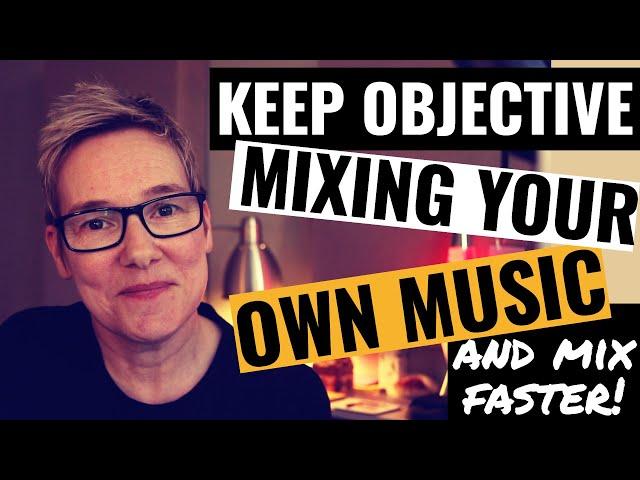
Mixing Your Own Music (Tips for Mixing Faster and Keep Perspective)
Комментарии:

Do any of these pitfalls resonate with you? Can you add to the list? I'd love to know and maybe I can add them to another video. Let me know in the comments!
Ответить
I love it! This channel is very good!
Ответить
This is gold, thank you !!!
Ответить
Thank you for your generosity.
No doubt I make some of those mistakes. Especially about not committing to sounds. In fact, sometimes I keep my programmed drums in MIDI just so I can change my samples midway, lol.
I'll try to be more objective.
Again, thank you very much.

This was really useful and practical advice. Thank you so much for sharing them🙂
Ответить
Three little rules I use:
1. When tracking (from the point where you have decided exactly what what a part should be, i.e. not just experimenting/jamming) you will never play it better than the second or third take because at that point you will be at the all time peak of your emotional involvement with the part and emotion trumps everything else bar a serious mistake. One of those two takes will almost always be better musically than any further attempts even if they are not as perfect, sometimes precisely because they are not perfect.
2. A very useful rule of thumb I picked up for arranging is the two things in/two things out rule for transitions. Putting two things in is not so hard. Taking two things out can be harder. I say "thing" because it can be literally anything. This generates contrast and therefore enhances interest and engagement throughout a song.
3. I believe in classical music orchestration class they talk about five main parts max at any one time. At different frequencies (although they talk about octaves, alto/baritone clefs and such). I take the view that these classical music types generally know what they are talking about and what they say is often applicable to all styles music.

perfection is the enemy of progress. this is so true
Ответить
Thank you for such wonderful, common sense advice. I know that it’s going to help me with my projects.
Ответить
You have such a soothing voice. Perfect for resetting the mind. Thanks!
Ответить
Fantastic!
Ответить
Fabulous - I love how concrete your advice is - and I have to agree - committing a sound during tracking is a revelation. BTW - the blooper reel at the end was a charming outro... cheers.
Ответить
Sara...how did you know I needed a good kick in the ass! thanks so much for sharing!
Ответить
Very much enjoyed this. I am a long time Music and audio professional, but it was still great to hear a lot of very important basics presented in such a well organized way. Kind of felt like audio engineering meditation. And I absolutely LOVE bloopers. LOL.
Cheers. Gonna go add some tambourine to my last mix.

This is the video I needed!
Ответить
My main takeaway is that I need to start using tambourine.
Ответить

























